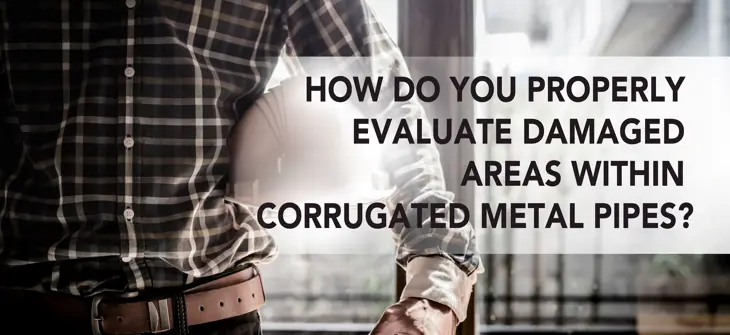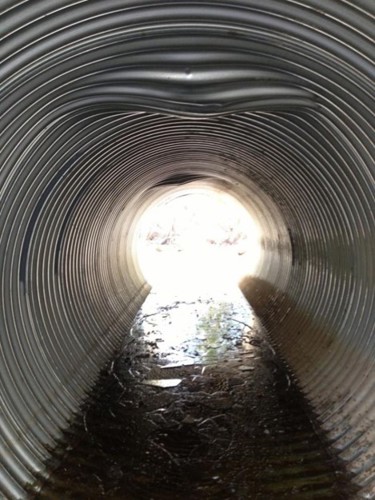
How Do You Evaluate Damaged Areas Within Corrugated Metal Pipes?
Having been in this industry for several years, I am often asked questions about the pipe installation process as well as a pipe's condition post-installation. I thought I would take the opportunity here to address issues regarding damage to corrugated metal pipes (CMP) that occasionally occurs during or after field installations.
 On occasion, it may be necessary to evaluate sections of corrugated metal pipe that have been compromised or damaged in some manner to determine if the pipe can be repaired, reinforced or must be replaced. The National Corrugated Steel Pipe Association (NCSPA) has published a design guidei that outlines a design procedure per ASTM A998ii to determine if a corrugated steel pipe needs to be reinforced when a lateral or tap-in is going to be cut into it. If reinforcing is required, a design methodology is provided for determining the size and location of the necessary reinforcement. Within the document there are numerous tables that define by pipe corrugation, gage and cover depth what the maximum tap-in size would be without requiring any additional reinforcement.
On occasion, it may be necessary to evaluate sections of corrugated metal pipe that have been compromised or damaged in some manner to determine if the pipe can be repaired, reinforced or must be replaced. The National Corrugated Steel Pipe Association (NCSPA) has published a design guidei that outlines a design procedure per ASTM A998ii to determine if a corrugated steel pipe needs to be reinforced when a lateral or tap-in is going to be cut into it. If reinforcing is required, a design methodology is provided for determining the size and location of the necessary reinforcement. Within the document there are numerous tables that define by pipe corrugation, gage and cover depth what the maximum tap-in size would be without requiring any additional reinforcement.
The design procedure and tables within the NCSPA Design Data Sheet can serve as an aid in determining whether the pipe has been structurally compromised due to the localized deformation, provided the damage is localized (i.e., does not involve the global deformation of the pipe) and isolated (i.e., there aren’t multiple damaged areas in the same vicinity of the pipe). The design procedure outlined in the Design Data Sheet can be used to evaluate corrugated aluminum pipe as well.
The procedure for this determination could be as follows:
- Measure the largest dimension across the locally deformed or damaged area in any direction.
- Compare this measured dimension to the maximum allowable branch diameter within the tables in the Design Data Sheet for the applicable pipe corrugation, cover depth and pipe gage being evaluated.
- If the dimension of the lateral that can be placed within the pipe is greater than the maximum dimension across the damaged area of the pipe wall, the pipe should be structurally stable without the need for any reinforcement.
- If the dimension of the damaged area is greater than maximum allowable branch diameter, the pipe will likely need to be reinforced or replaced. A consulting engineer should be retained to design the reinforcing requirements.
The tables shown in the Design Data Sheet are only applicable for pipe that is subjected to standard highway live loads. Step 1 of the Design Procedure describes how other live loads can be evaluated with this document. If there is any question as to the applicability of this document to the evaluation of a damaged pipe, a consulting engineer (one who is familiar with the proper design, installation and evaluation of corrugated metal pipe) should be retained to make a proper evaluation and recommendation for the pipe.
iDesign Data Sheet No. 18, National Corrugated Steel Pipe Association, September 1999
iiASTM A998-18, Standard Practice for Structural Design of Reinforcements for Fittings in Factory-Made Corrugated Steel Pipe for Sewers and Other Applications, ASTM International, 2018
